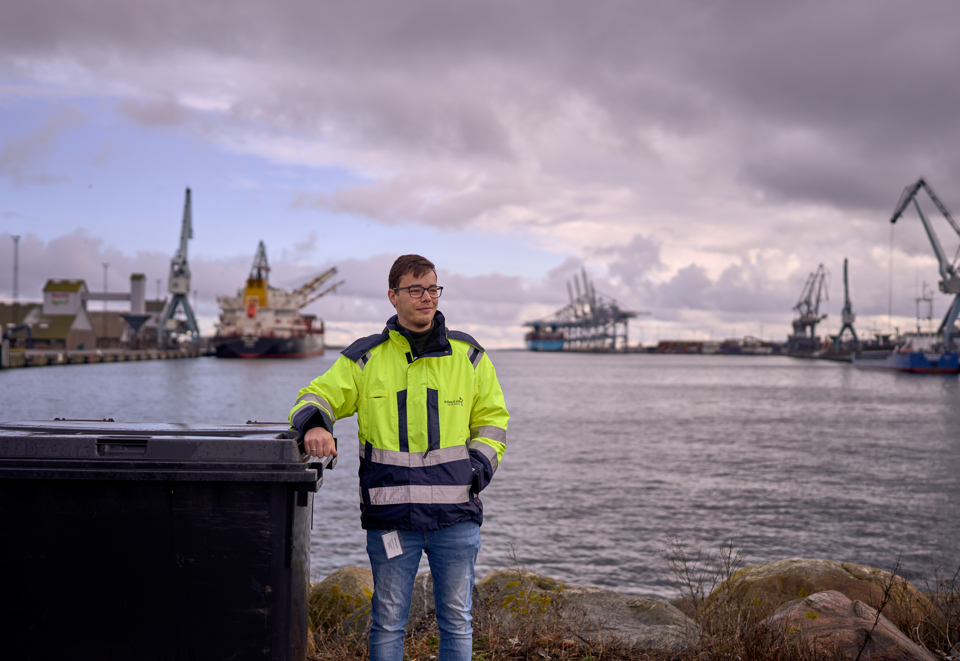Only a month passed before Mads Søgaard could go from new graduate in Environmental Management and Sustainability from Aalborg University to a job as an environmental engineer at the Port of Aarhus. Shortly before, the port had launched its ambitious vision of becoming the most sustainable port in the Baltic Sea region, a challenge that attracted the new engineering graduate.
− It was one of the very first applications I sent after I graduated. I had actually considered doing a PhD in Aalborg, but I could already see at the interview that the work here would be really exciting, he says.
He and a colleague are the team at the Port of Aarhus tasked with calculating and reporting the port's CO2 footprint. This requires an overview and insight because the CO2 footprint is mapped throughout the port's value chain. Although the port owns cranes, land and berths, it is the companies at the port that produce the bulk of emissions.
− When we look at the port's climate footprint, most of it naturally comes from our partners in the transport industry. So a large part of my focus is on helping them become more sustainable and creating the framework for us to find the right path together, says Mads Søgaard.
− We take companies by the hand and try to influence their sustainability journey rather than make demands. It can be storage of surplus heat, sustainable construction, a biogas station or installation of fast chargers for electric cars. It's very much about ensuring that there are sustainable fuels for transport companies, he explains.
Broad expertise
The Port of Aarhus is one of the first ports in the world to be approved by Science Based Targets. This initiative, launched by organizations such as the UN and the World Wildlife Fund, aims to support companies in realizing their climate goals based on scientific facts. The port’s recognition is based on the extensive CO2 reporting that Mads Søgaard works with.

